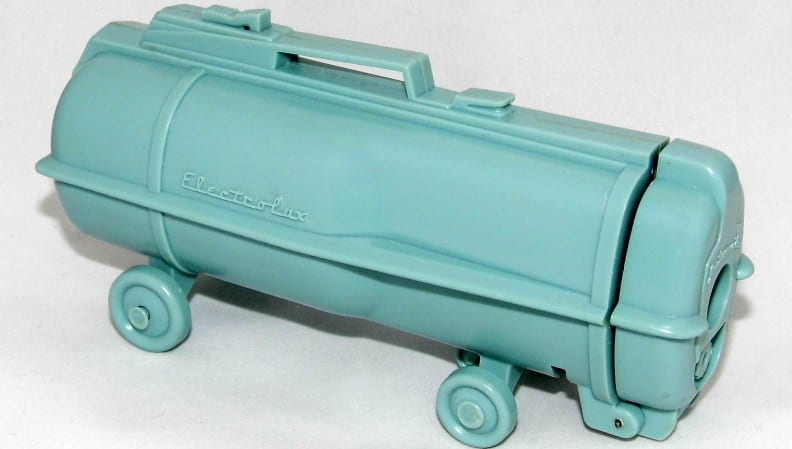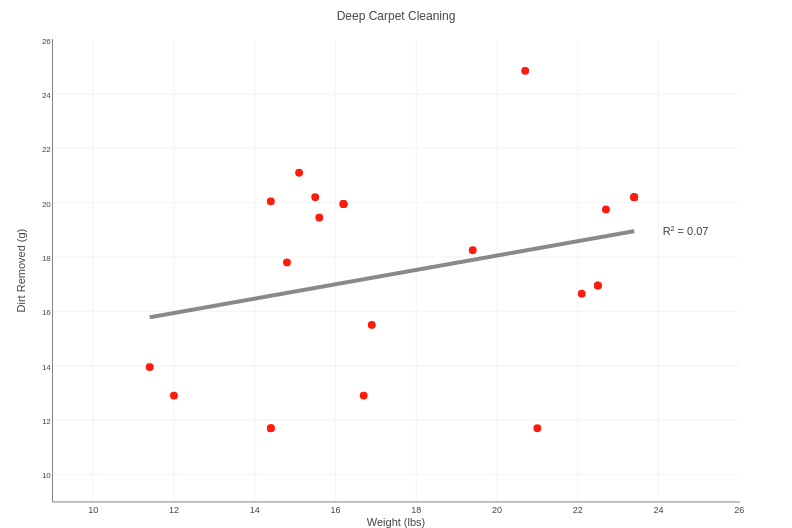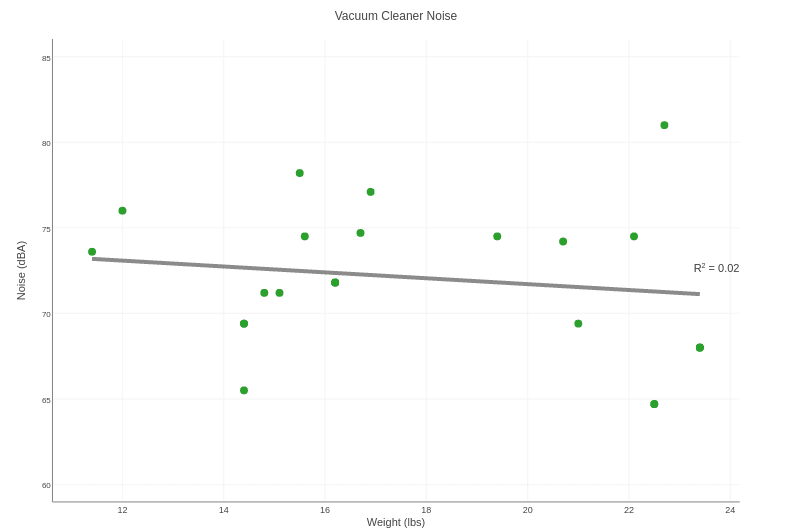Products are chosen independently by our editors. Purchases made through our links may earn us a commission.
Growing up, I hated vacuuming, and not just because it was a boring way to spend a weekend. I feared vacuuming because our old canister vacuum cleaner was extremely heavy and cumbersome.
Even today, the memory of the pain I felt when I accidentally rolled the canister over my toes is crystal clear. Just getting it out of the closet was nearly impossible—it weighed too much. At that point, I would have much preferred to have it mounted on my back, Ghostbusters-style.

My back and toes cringe in fear at the sight of this vintage vacuum.
However, once it was successfully sprung from the closet, the cleaning power was amazing; crumbs would flee before its awesome suction. I can point with certainty to that cursed vacuum cleaner as the cause for my belief that a heavy vacuum cleaner meant better carpet cleaning.
After all, doesn't just it make sense that a heavy vacuum cleaner = heavier motor = stronger motor = better suction = better cleaning?
As it turns out, I was wrong. I don't like being wrong, obviously, but this was one particular instance where I didn't mind it so much. With the cornucopia of vacuum test data and a series of simple statistical analyses, I was able to prove to myself that vacuum cleaners don't have to be insanely heavy to get the job done.
Admittedly, both technology and engineering have advanced significantly since I was a kid. Innovations that build on the basic vacuum cleaner components have allowed manufacturers to make motors that are both compact and strong, air filters that significantly reduce allergens and other airborne detritus, and lightweight vacuum designs that optimize air flow.
For example, even though it only weighs 16 lbs., the Eureka Brushroll Clean AS3401A upright vacuum cleaner (Buy now for $100), outperforms the Kenmore 81614 canister vacuum (Buy now for $250), coming in at a whopping 23 lbs., on both deep and short carpet cleaning. To see how the rest of the data unfolded, read on.
The Results
We used a series of simple linear regression analyses, as summarized by R2, to see if vacuum cleaner weight and cleaning performance were related.
Let's start by looking at cleaning performance. In our tests, cleaning performance is partially determined by measuring how much dirt (out of a total 100 g) the vacuum cleaner can remove.

Part of the vacuum testing process involves squishing dirt into a carpet so that we can measure how well a vacuum can remove it.
The chart below compares vacuum cleaner weight to average dirt removed from a short pile carpet:

A plot comparing vacuum cleaner weight and dirt removed for short carpets with a linear trend line.
Interesting! The R2 value hints that some of the variability in short carpet dirt removal might be explained by vacuum cleaner weight. This tentative correlation might be strengthened by adding a lot more data, or it might not. With our present data set, however, we cannot conclude that heavier vacuums remove more dirt from short pile carpets.
What about when it comes to removing dirt from deep pile carpets?

A plot comparing vacuum cleaner weight and dirt removed for deep carpets with a linear trend line.
Oof, an R2 value close to zero means that there is a very low likelihood that vacuum cleaner weight explains the variation in the cleanliness of deep pile carpets. This might speak to the difficulty of cleaning deep pile carpets in general, but there’s no evidence that having a heavier vacuum will help you to clean the shag carpet in your living room.
Just out of curiosity, I also compared the vacuum cleaner’s weight to the vacuum cleaner’s noisiness (which we also measure during testing), based on the assumption that a heavier vacuum would house a bigger and louder motor:

A plot comparing vacuum cleaner weight and vacuum cleaner noise with a linear trend line.
Looks like there's no clear relationship between vacuum cleaner weight and the noise produced. This makes sense because the audible noise produced by a vacuum cleaner is more a function of how well it's designed and sealed, rather than how heavy it is.
Well! Now that we've all had our daily dose of statistics, let's summarize: even after testing numerous vacuum cleaners over a period of years, we have little to no data to support the conclusion that heavier vacuum cleaners do a better job of cleaning (or even that they're noisier) than lighter vacuums. That said, cleaning your carpeted home with a handheld vacuum is probably not going to get the job done to your satisfaction, in addition to being a massive time suck (pun intended).
But the next time you're looking to buy a vacuum cleaner, don't automatically resign yourself to buying something that might throw your back out. If you want to read more about the vacuums we've tested, take a look at out our library of vacuum reviews. If you're in the market for a robot vacuum, we've got thoughts on those, too. If you're still feeling lost, we also have suggestions for picking the right vacuum for you. Good luck, and may you never discover what it feels like to run over your foot with a vacuum cleaner.
The Statistics
In a linear regression, the two variables (i.e. vacuum weight and dirt removed in a short carpet) are plotted against one another, and a line of best fit is calculated. If a higher vacuum cleaner weight is directly related to an increase in cleaning performance (i.e the two are linearly related), then the x (i.e. vacuum weight) and y (i.e. dirt removed) data would fit nicely along a line. One way to tell how directly x is related to y is to look at the R2 value of the best-fit line.
R2 is a metric used to describe how one variable predicts another variable. R2 values range from 0 to 1, with 1 being a line that perfectly fits the data, and 0 being a line that is a really poor fit for the data points. The exact meaning of R2 varies greatly depending on what type of data you have, but in general, R2 values less than 0.50 aren't significant—that is, there is not a strong correlation between the x and y values.
There are many different types of fit lines (polynomial, exponential, logarithmic, etc.), but a straight line is the simplest.
